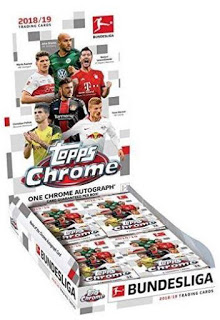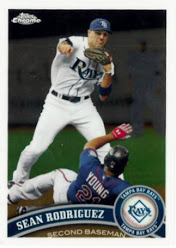The USPTO refused to register the mark CHROMAFUSION for plastic protective sleeves for trading cards and gaming cards, "having an opaque side and a translucent side" ... " for use in card game competitions and tournaments," finding confusion likely with the registered mark CHROME for trading cards. The Examining Attorney submitted evidence that the goods involved are of types that are sold through the same trade channels, but Applicant Ultra Pro argued that its protective sleeves are unsuitable for trading cards [despite use of that term in its identification of goods] because they are opaque on one side. How do you think this came out? Are the marks close enough for confusion? In re Ultra Pro International, LLC, Serial No. 87570853 (April 2, 2021) [not precedential] (Opinion by Judge Frances S. Wolfson).
Examining Attorney Jacqueline A. Jones objected to the inclusion of evidence attached to Ultra Pro's brief. The Board, as usual, found the evidence to be either duplicative of evidence already in the record, or untimely. In any case, the excluded evidence did not affect the outcome of the case.
The Board found the involved goods to be complementary. As to Ultra Pro's argument about the opacity of one side of its protective sleeves was irrelevant, the Board made this curious statement: "[I]n evaluating whether the goods are related or complementary, we must base our determination on the goods as identified in the application and cited registrations, rather than what occurs in the marketplace." [Actually the opacity limitation does appear in Ultra Pro's application - ed.].
The evidence showed that both applicant's and registrant's types of goods are sold online by the same third-party vendors under a single mark: e.g., Pokémon Center sells card sleeves and cards under the mark POKÉMON TCG.
As to the marks, the Board found them to be "somewhat similar in appearance and pronunciation due to the shared element 'CHROM.' Nonetheless, they convey substantially different connotations and overall commercial impressions."
"Whereas the term 'chrome' is defined as 'chromium plate as a decorative or protective finish on motor-vehicle fittings and other objects,' ... the term 'chroma' is defined as 'purity or intensity of color'" or as the saturation of a color. Moreover, the Board found that the term CHROMA is not separable from the remainder of applicant's mark. "Rather, together with the word FUSION, it forms part of a unitary, compound mark."
CHROMAFUSION brings to mind "a confluence of intense colors merged together," and thus engenders a very different overall commercial impression than the mark CHROME.
The Board found this first duPont factor to be dispositive: "Applicant's mark is so different from Registrant's marks that confusion is unlikely."
And so the Board reversed the refusal.
Read comments and post your comment here.
TTABlogger comment: How did you do? Did you play your cards right? Do you find the Board's opinion somewhat opaque?
The content of this article is intended to provide a general guide to the subject matter. Specialist advice should be sought about your specific circumstances.
We operate a free-to-view policy, asking only that you register in order to read all of our content. Please login or register to view the rest of this article.



